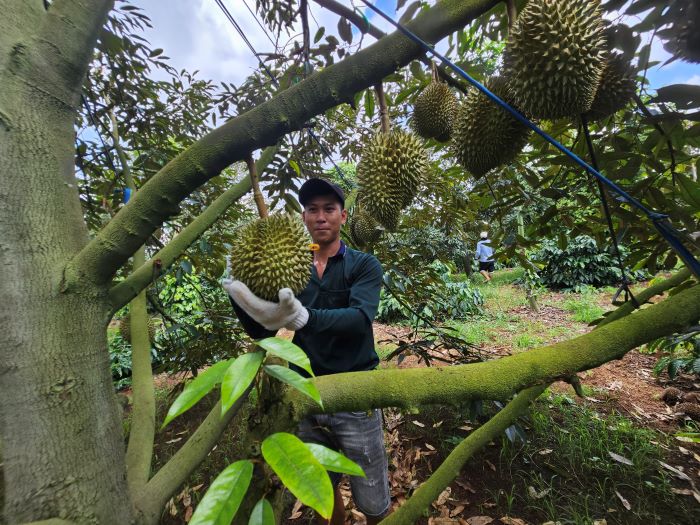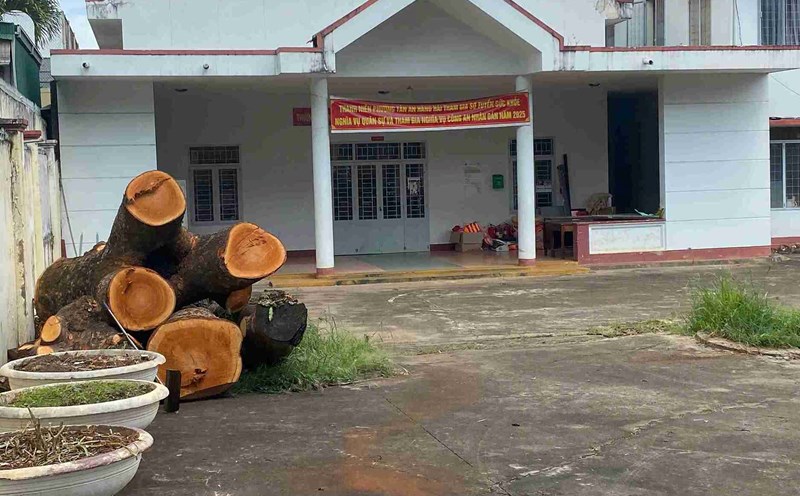Increased output and the problem of the consumer market
Dak Lak currently has about 41,000 hectares of durian, with an expected output this year reaching about 400,000 tons - a sharp increase compared to previous years.
Large output means pressure on quality control and ensuring stable output. Especially when the Chinese market - which consumes the majority of durian in Vietnam in general and Dak Lak in particular - is tightening regulations on inspection of banned substances such as yellow salt and cadimi heavy metal.
In this situation, the durian industry in Dak Lak alone faces the problem of strictly meeting export standards. Mr. Le Tan Dung - Chairman of the Board of Directors and Director of Thang Tien Agricultural Cooperative (Krong Pac District, Dak Lak) - said that the Cooperative currently has 2,500 hectares of durian.
It is expected that the harvest in the 2025 crop will reach about 8,00010,000 tons and may increase to 50,000 tons by 2030. With a large output, the cooperative pays special attention to sustainable development, ensuring stable output for farmers.
Currently, the cooperative has deployed the installation of a QR code to trace the origin of each garden in the growing area codes. The cooperative wishes to cooperate with processing and exporting enterprises to build standard raw material areas, provide safe, biological, organic products that can trace their origin.
According to Mr. Dung, to develop durian sustainably and build a national brand, it is necessary to focus on three strategic pillars: Strictly manage the growing area code and packaging facility code; build a closed chain of links between farmers, cooperatives, processing - exporting enterprises, scientists and state management agencies.
For its part, the cooperative has been focusing on digital transformation, developing green agriculture, circular agriculture to reduce emissions and increase product value.

Building green canals, opening up consumption routes
Mr. Le Anh Trung - Chairman of the Dak Lak Durian Association - said that the Association has coordinated with research units and enterprises to determine Dak Lak as a cadimi-free area.
On that basis, the Association has recommended that competent authorities promptly announce safe areas. According to Mr. Trung, this not only helps strengthen trust with importers but also facilitates the trade and export of durian.
He also emphasized the importance of building a set of criteria to score enterprises participating in the "green channel" chain in exports. This set of criteria will help ensure that products meet safety standards, reduce inspection and shorten customs clearance time.
In addition, businesses need to prove their production capacity, reliability and financial potential to build long-term trust with international partners.
"The recent market decline is a warning for both farmers and businesses. Reputation must be a common reputation, not just for the benefit of a unit. When the general market is stable and developing, everyone benefits, so everyone needs to act together, Mr. Trung emphasized.
He also noted that in the current sensitive period, farmers and businesses need to verify information before posting it on social networks.
If there are questions or information that need to be verified, it should go through units such as the Department of Agriculture and Rural Development, the Department of Natural Resources and Environment or the durian Association for accurate guidance, to avoid affecting the confidence of the export market.











